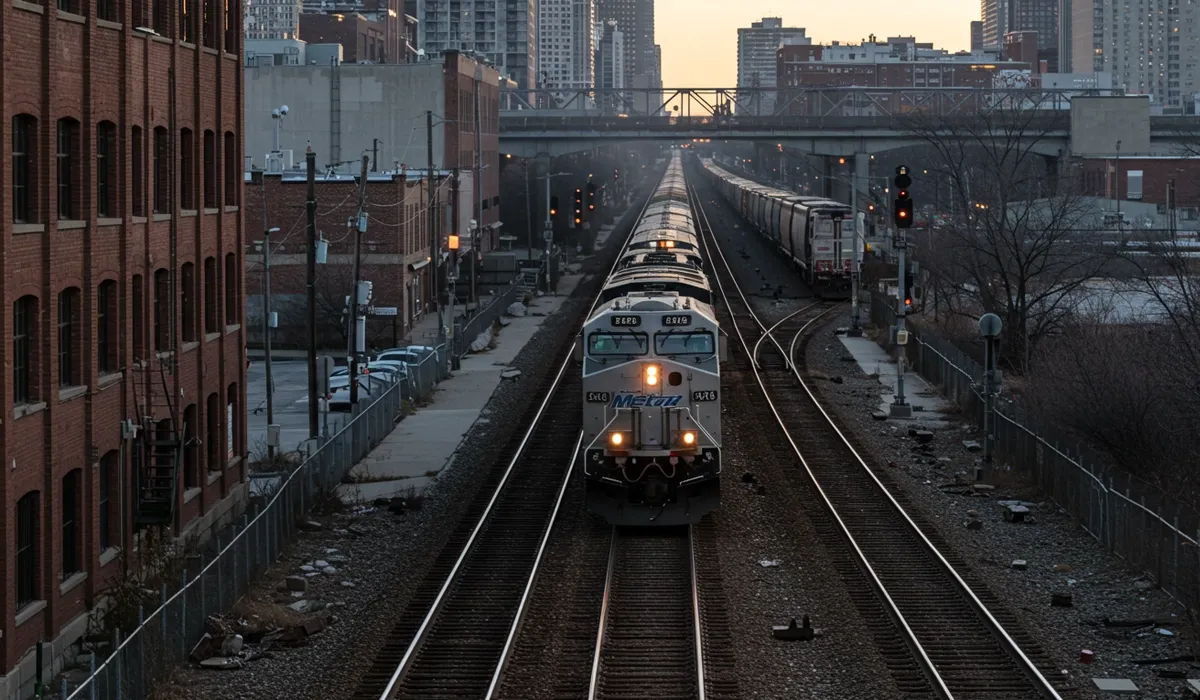Overview of the Intermodal Railyards

Champaign’s primary rail terminal complex is the Illinois Terminal, operated by the Champaign-Urbana Mass Transit District and Canadian National Railway, serving Amtrak, CN, and connecting bus lines, with direct links to CN’s Champaign Subdivision and Norfolk Southern’s mainline.

The Illinois Terminal intermodal facility enables seamless transfer between Amtrak passenger rail, regional and intercity buses, and local transit, with CN and Norfolk Southern providing freight interchange and Union Pacific trackage rights for efficient cargo movement.
Market Size and Economic Impact
Champaign’s rail network handles over 20 million tons of freight annually, supporting a regional economy valued at $2.5 billion and providing more than 2,000 direct and indirect rail-related jobs, ranking among Illinois’ top five rail freight hubs outside Chicago.
Competitive Landscape
- Canadian National: Owns and operates the mainline yard and terminal, handling bulk, intermodal, and manifest freight
- Norfolk Southern: Operates a major yard and interchange, connecting Midwest and Southeast markets via the Danville District
- Union Pacific: Holds trackage rights, providing westbound connections and serving local grain elevators and manufacturing
Opportunities
- Midwest Logistics: Growth in e-commerce and distribution centers drives demand for intermodal and carload services
- Agricultural Exports: Expansion of grain and ethanol shipments leverages Champaign’s central Illinois location
- Passenger Rail: Increasing Amtrak ridership and planned corridor upgrades support regional mobility and economic growth
Challenges
- Congestion: Limited yard capacity and mainline bottlenecks constrain train throughput during peak periods
- Infrastructure Age: Legacy bridges and track segments require ongoing maintenance and modernization
- Service Reliability: On-time performance for passenger and freight trains impacted by shared corridor congestion
Trade and Logistics Trends
- Intermodal Expansion: Steady growth in containerized freight from Midwest distribution centers
- Grain Shipments: Strong demand for corn, soybeans, and ethanol exports to Gulf and East Coast ports
- Passenger Growth: Amtrak ridership rising with corridor improvements and university-driven demand
Future Outlook
- Terminal Modernization: Planned upgrades to Illinois Terminal and CN yard to expand capacity and improve efficiency
- Corridor Investments: Ongoing track and signal improvements to support higher speeds and heavier freight loads
- Passenger Enhancements: Amtrak service expansions and station improvements to accommodate growing ridership
Recommendations
- Yard Expansion: Invest in additional track and siding capacity to relieve congestion and support future growth
- Technology Integration: Deploy advanced train control and yard management systems for operational efficiency
- Public-Private Partnerships: Leverage state and federal funding for infrastructure modernization and economic development
Champaign, IL
Champaign serves as a central hub in Illinois’ rail network, connecting the Chicago, St. Louis, and Memphis corridors and supporting a metropolitan region of over 230,000, with direct rail access to major Midwest and Southern markets.
Champaign’s strategic location at the intersection of CN, Norfolk Southern, and Union Pacific corridors provides direct access to Chicago, St. Louis, Memphis, and the Gulf Coast, making it a vital Midwest gateway for freight and passenger rail.
Where you'll go
Things to know
Rail Operations
Railroad Heritage: Champaign’s first rail line arrived in 1854 with the Illinois Central, shaping the city’s growth and economy
Facilities & Services
University Anchor: Home to the University of Illinois Urbana-Champaign, a major research and freight generator
Location Benefits
Agricultural Heartland: Located in one of the nation’s top corn and soybean producing regions, fueling bulk rail exports
Additional Information
Innovation Cluster: University partnerships drive logistics technology, supporting advanced rail operations and workforce development